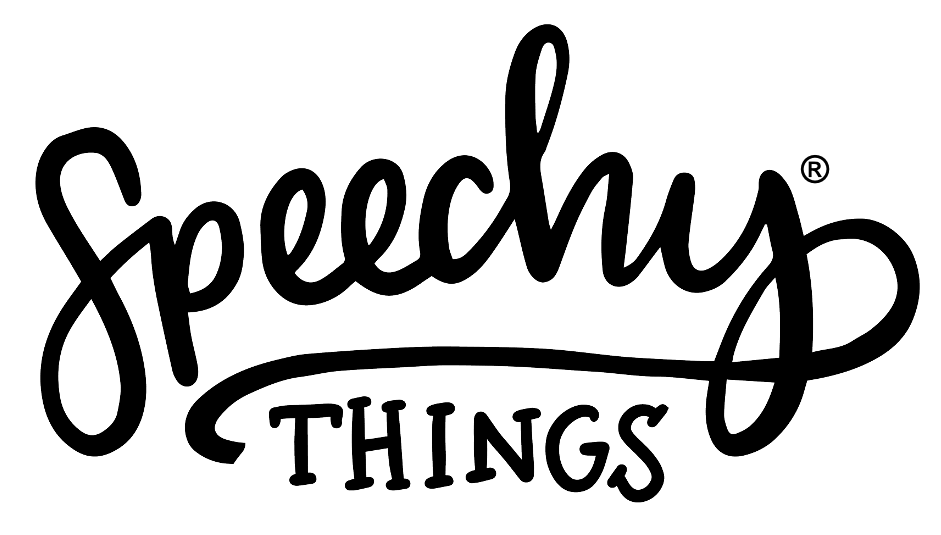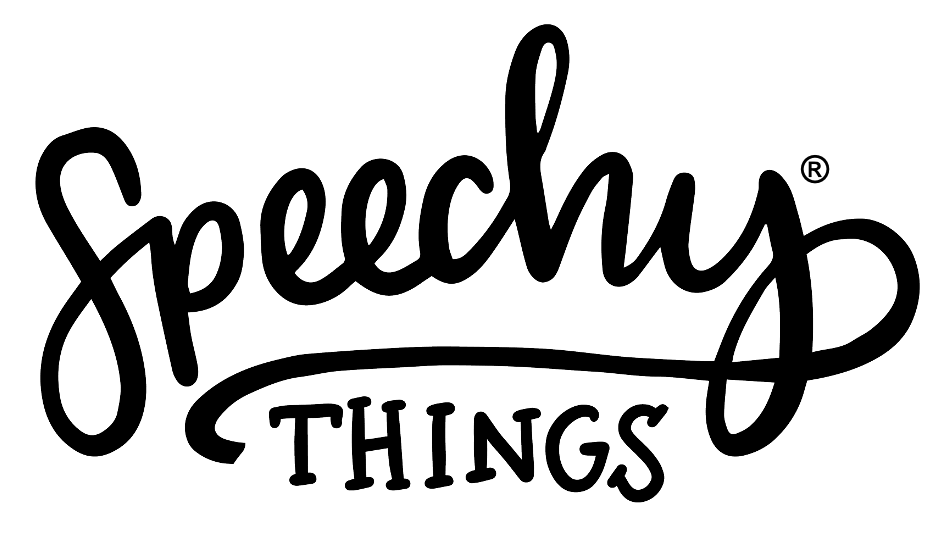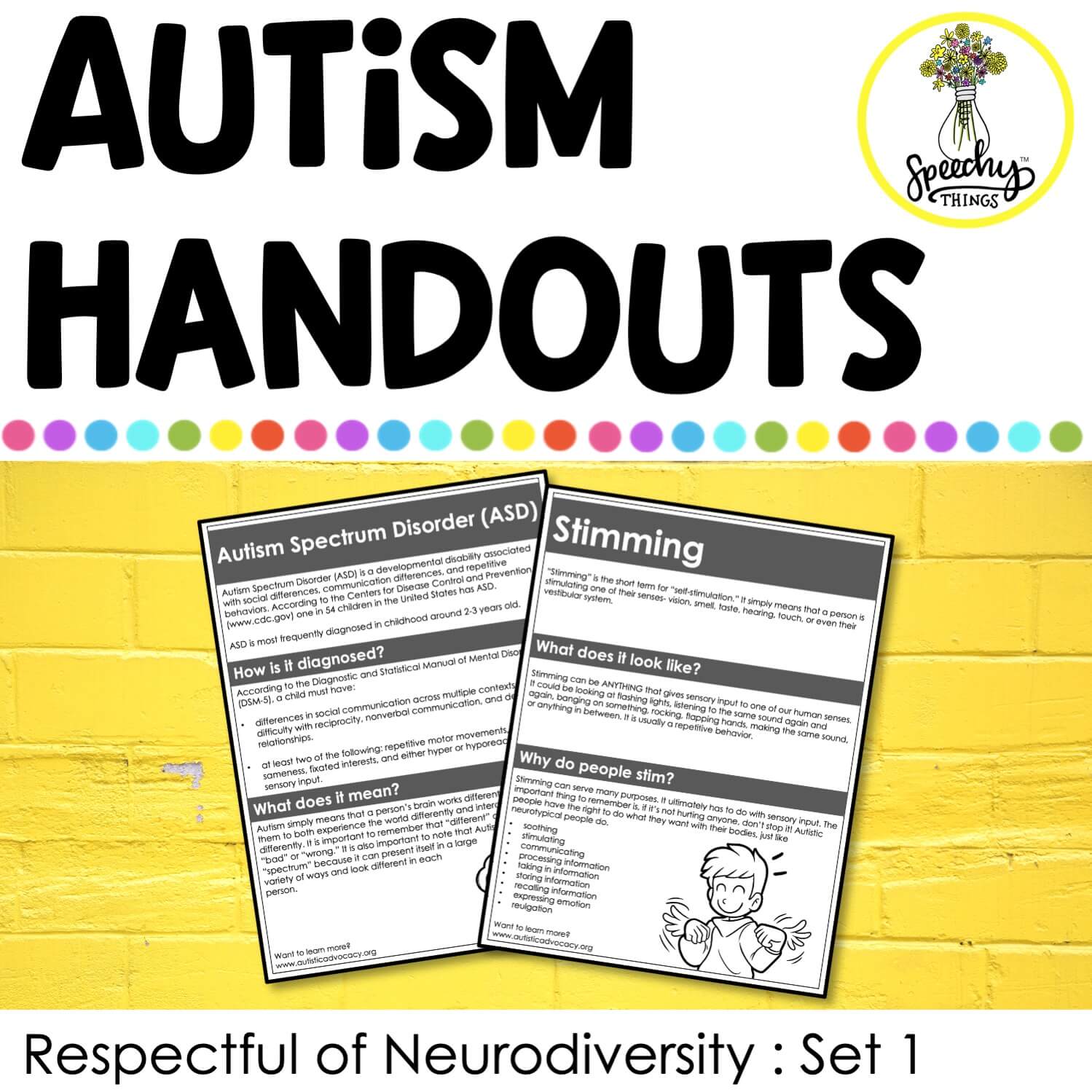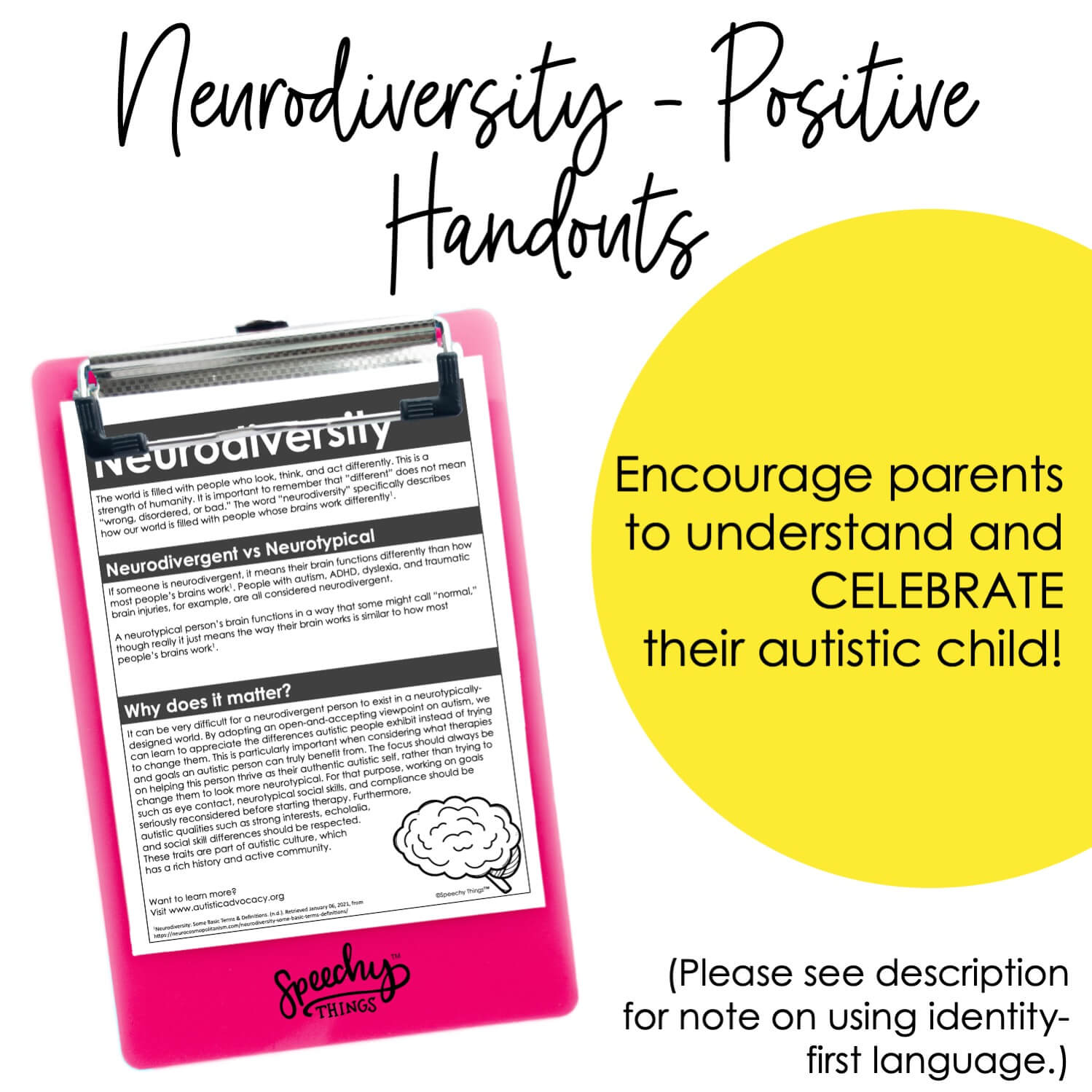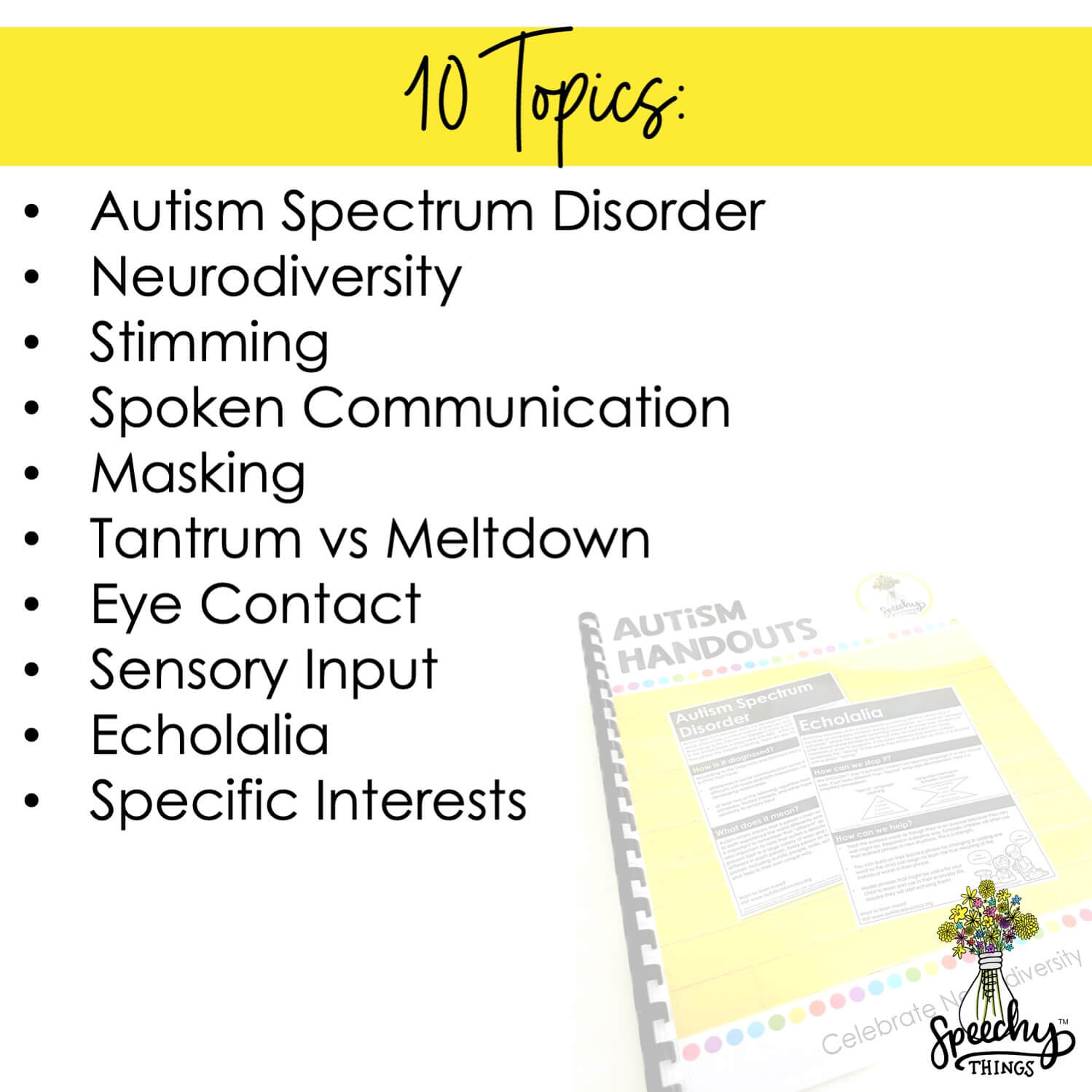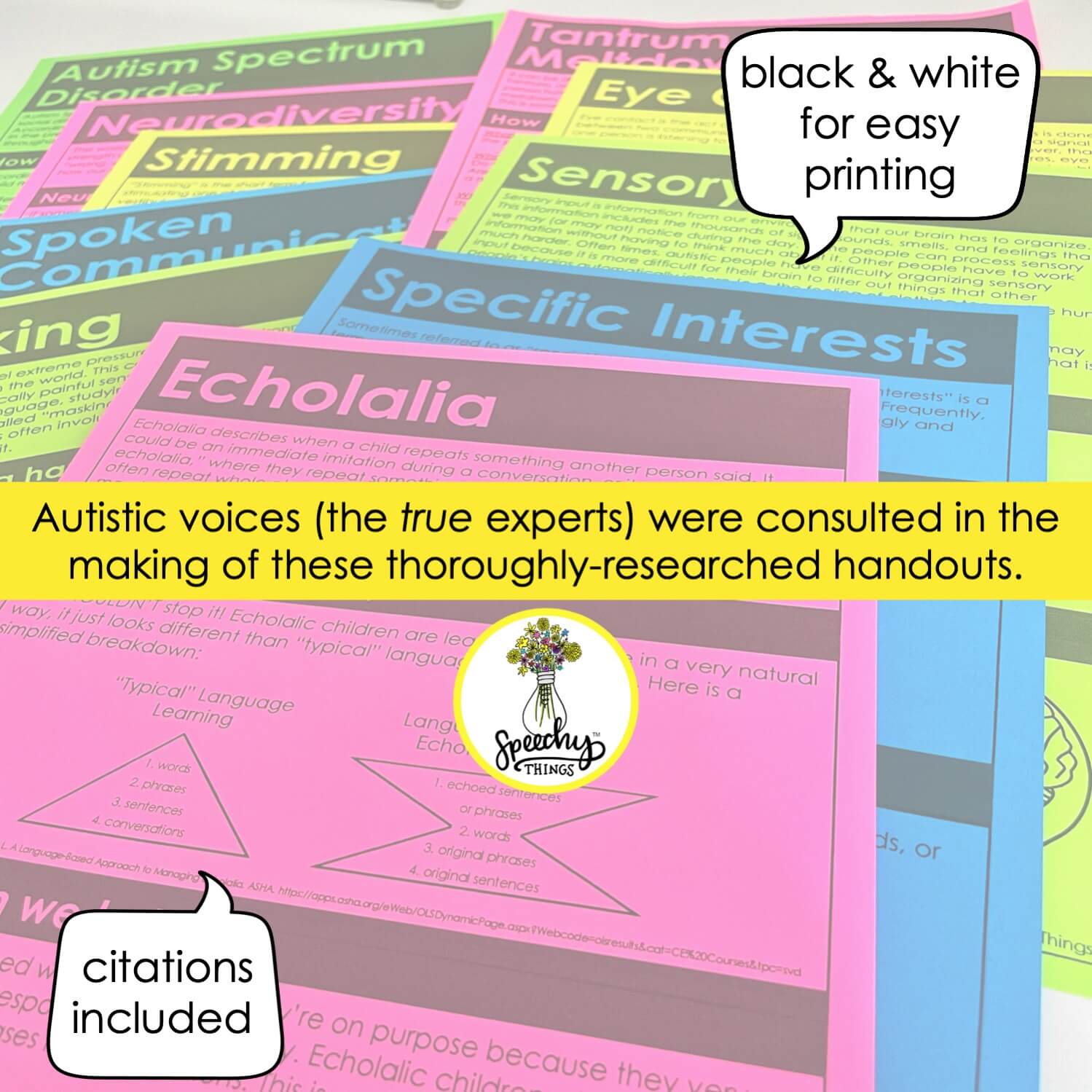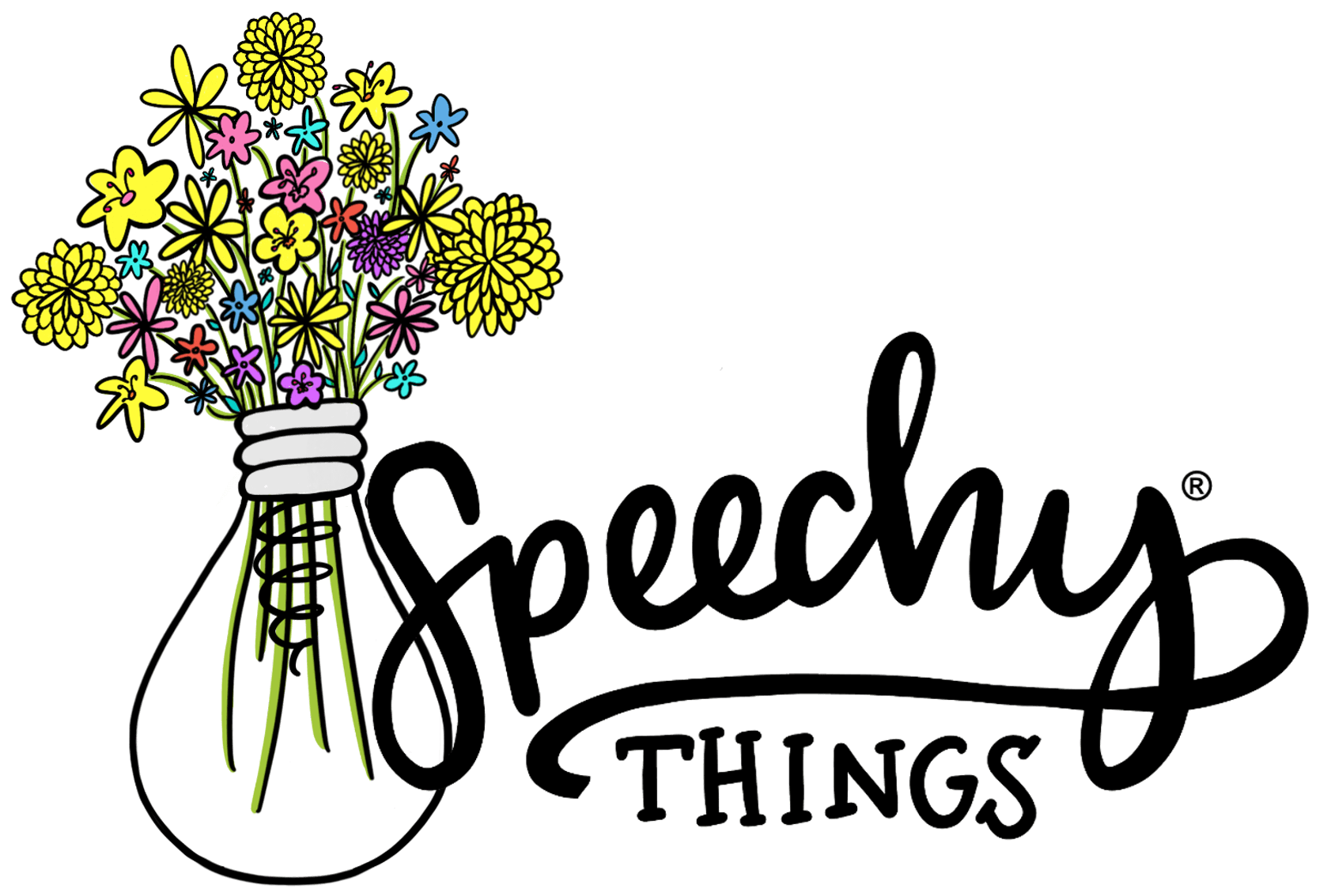Description
***IDENTITY-FIRST LANGUAGE***
Please note these handouts use identity-first language as opposed to person-first. You can read more about how this reflects the preference of the autistic community here.
☞ CUSTOMER REVIEWS FROM TPT ☜
○ “I LOVE THIS RESOURCE SO MUCH!”
○ “Love that this provides all the needed information without being overwhelming.”
○ “These handouts are well organized and have all the info necessary for parents, yet they are simple to read and very parent friendly!”
○ “This was a great resource for our autism assessment team to use for sending home to our parents of students on the autism spectrum.”
⇨ WHAT’S INCLUDED ⇦
○ Autism Spectrum Disorder
- definition, prevalence
○ Neurodiversity
- neurodiverse vs neurotypical, “different” does not equal “wrong”
○ Stimming
- examples, functions of stims, importance of allowing stims
○ Spoken Communication
- examples of alternative communication modalities, importance of getting AAC for a person who does not use (or does not yet use) spoken communication
○ Masking
- explanation of how it leads to trauma, brief discussion on therapy implications
○ Tantrum v Meltdown
- discussion on how to recognize the differences, discussion on how to respond
○ Eye Contact
- explanation of how it varies across cultures & can cause discomfort for autistic people, explanation of how it does not equate attention, the importance of not requiring eye contact from autistic people
○ Sensory Input
- types of input, difficulty processing, seeking v avoidance
○ Echolalia
- explanation on echolalia as a strength and natural way of learning language, brief discussion on “typical” language vs the language learning of an echolalic child, brief language therapy tips for echolalic child
○ Specific Interests
- examples, the importance of not removing specific interests or only giving access as a reward
⇨ HOW TO PREP ⇦
○ This is NO PREP! Just print and go.
⇨ RESEARCH ⇦
- Data & Statistics on Autism Spectrum Disorder. (2020, September 25). Retrieved January 06, 2021, from https://www.cdc.gov/ncbddd/autism/data.html
- American Psychiatric Association. Diagnostic and statistical manual of mental disorders. 5th ed. Arlington, VA: American Psychiatric Association; 2013.Jasso, J. (2019, June 14). The Informed SLP. Retrieved February 20, 2020, from https://www.theinformedslp.com/
- Neurodiversity: Some Basic Terms & Definitions. (n.d.). Retrieved January 06, 2021, from https://neurocosmopolitanism.com/neurodiversity-some-basic-terms-definitions/
- Cress, Cynthia J. and Marvin, Christine A., “Common Questions about AAC Services in Early Intervention” (2003). Special Education and Communication Disorders Faculty Publications. 88. https://digitalcommons.unl.edu/specedfacpub/88
- Kasari C, Kaiser A, Goods K, Nietfeld J, Mathy P, Landa R, Murphy S, Almirall D. 2015. Communication interventions for minimally verbal children with autism: A sequential multiple assignment randomized trial. Journal of the American Academy of Child and Adolescent Psychiatry, 53(6):635-646.
- Millar, D. C., Light, J. C., & Schlosser, R. W. (2006). The Impact of Augmentative and Alternative Communication Intervention on the Speech Production of Individuals With Developmental Disabilities: A Research Review. Journal of Speech, Language, and Hearing Research, 49(2), 248-264. doi:10.1044/1092-4388(2006/021)
- Pearson, A., Dr, & Rose, K. (2020, July 15). A Conceptual Analysis of Autistic Masking: Understanding the Narrative of Stigma and the Illusion of Choice. https://doi.org/10.31219/osf.io/6rwa5
○○○○○○○○○○○○○○○○○○○○○○○○○○○○○○○○○○○○○○○○○○○○○○
COME SAY HI!
● VIP Emails : Get access to my freebie library, exclusive deals, and therapy tips!
● Instagram : I’m here most often – therapy ideas, Q&A’s, and daily life!
● Blog : Find helpful ideas and reviews for your therapy room!
● Youtube ● Pinterest ● Facebook ●
○○○○○○○○○○○○○○○○○○○○○○○○○○○○○○○○○○○○○○○○○○○○○○
This resource is copyrighted by Lindsey Hockel, MS, CCC-SLP, owner of ©Speechy Things™ . Purchase of this item is intended for use by a single customer and is not to be shared with other professionals. If someone is interested in this resource, please direct them to my store. You are, however, welcome and encouraged to send pages home with students as needed. Thank you for your support and understanding!


